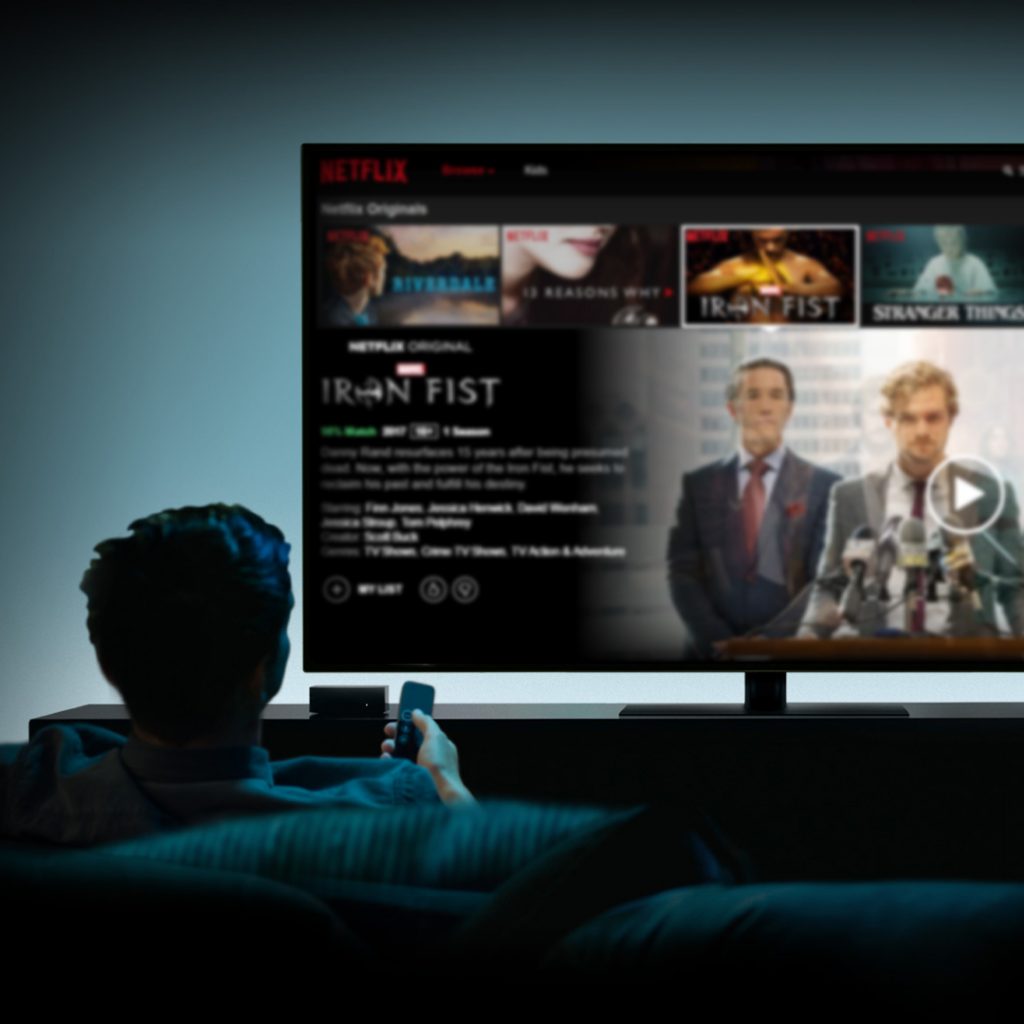As the devices are getting smarter and the internet is getting faster, the closely associated trends are also clutching the stage. Online video streaming has gone through an unprecedented evolution and has influenced the market share of its closely related segment –traditional pay TV t a great extent. Looking at the stats released by Deloitte for the year 2017, we can conclude that-
- 55% of the US population is now using paid video streaming services.
- 48% of US consumers stream the same TV content via online services.
- US consumers paid $2 billion monthly subscriptions to video streaming services.
The taste of entertainment and media consumers is changing. We can see a shift both in the ways video streaming services function today and the ways consumers consume the media content. Though this massive shift did not occur overnight. It was a gradual proliferation that actively involved the advancement in the technologies being used to-
- Develop video streaming software and solutions.
- Broadcast the online content to the global audience.
- Consume the online content from the end-users’ side.
How did this shift occur?
2015 was an imperative eon for upgrades in the streaming friendly internet technology. We saw a shift from the legacy streaming protocols to the specially crafted overlay networks, dedicated streaming protocols, and custom servers for faster buffer free content delivery. The new infrastructure supported the advanced content delivery mechanisms like –
- Breaking data packets in small chunks
- Enlarging the geo-boundaries and loss-less streaming.
- HTTP-based WebRTC streaming directly direct browsers.
These advancements when implemented on contemporary video streaming software, aided streaming services to –
- Reduce video infrastructure cost.
- Simplify the network organization.
- Upscale the IT and server infrastructure.
- Enhance video streaming quality and UX.
How it affected the legacy streaming operations?
For most of the video streaming services and organizations that used the legacy technologies, infrastructure, and protocols, the modern shift was a decisive modulation. For example, the new setup offered a better alternative. So most of the video streaming software development companies, white label streaming services, infrastructure providers, and the associated service vendors adapted to the change and closed their legacy operations.
Now, the video streaming services still stuck with the legacy technology faced a forced situation to adopt the inevitable change. Otherwise, they would have to be ready to face challenges such as –
- Limited choice of hardware infrastructure
- Limited streaming software support
- Limited vendors for associated API support
- An eventual boost in the delayed migration cost
Bottom line: The shift to the modern stack was not an option but a necessary move if the streaming services and business intended on continuing their operations and enhance the end-user experience with a better tech stack, reduced operational cost, and up-scaled streaming quality.
How the world adapted to modern video streaming?
Early adopters took no time to migrate. They saw a new arena of broadened possibilities and enhanced video streaming business operations. However, this transition was not a sudden explosion. The 2008 Summer Olympic had already laid a foundation of new expectations for it.
For the first time ever, they streamed the entire Summer Olympic in high definition video quality. With a partnership between Microsoft and NBC, they delivered the smoothest video streaming world had ever seen by then. In a very short span of just 2 weeks, almost 50 million unique visitors streamed 70 million times to watch 10 million hours of video content.
This joint venture by a tech giant and the well-known broadcaster laid a milestone. It’s not that such attempts were not made in the past, but this time a complete broadcast in HD quality was a wonder. The event made it clear that the internet is much scalable to stream huge, high-quality, stable, and seamless video content.

Foundations of Modern Streaming Technologies
The success of HTTP streaming for the Olympics was mainly an indication for something bigger. They used the simple but very powerful architecture. HTTP streaming proved its significance by fully adapting to the laid network topology and leveraging the stateless and cache-based internet architecture. Contrastingly, the custom streaming protocols hinder the underlying architecture and fail to leverage the internet to the fullest.
Here are a few of the fundamental aspects that make contemporary video streaming infrastructure better:
1. Content delivery in small chunks:
The modern transmission protocols divide a video file into multiple smaller chunks and transmit each chunk independently through different routes across the internet. The routing manages the sequence of the delivery and transports the final content in the original form at the user end.
2. Independent chunk transmission:
Each of the chucks takes independent routes while in transmission and none are dependent on the previous requests. That means the video playback is independent of the need for a persistence connection between the device and the origin server.
3. HTTP-based transmission protocols:
The chunked-segments travel across the internet and the local WAN networks using a single HTTP protocol. The HTTP protocol is equipped with both abilities to transmit unencrypted content through TCP port 80 and 443 for SSL-encrypted content.
4. CDN-based global HTTP caching:
Content delivery networks (CDN) have made transmission smoother through dynamic caching. CDNs use HTTP caches across the internet and corporate WANs. This helps them to cache and store segmented data to different nodes and deliver them to the nearest device much faster. This passive network architecture ensures a dynamic buffering of the content from the nearest nodes without fetching them from the origin server each time.
5. Adaptive bitrate switching:
The biggest driver of advancement in the video streaming market is adaptive bitrate switching. The video is encoded on multiple formats and resolutions for different qualities. Streaming engines use adaptive bitrate switching to dynamically adjust the stream quality according to the internet bandwidth and device playback capacity. It minimizes the buffering efforts and delivers seamless packets in an adaptive environment.
Benefits of modern streaming for businesses and consumers
The advancements in the tech stack and addition of modern protocols opened doors for easy broadcast to the multitude. The HTTP streaming was indeed superior to legacy protocols like RMTP and RTSP in terms of streaming quality. However, it also made the paid streaming services possible and allowed an enhanced user experience to the end users. Ultimately, we could see the positive effects on business operations as well.

1. It slashed the infrastructure complexity
The default HTTP streaming using TCP ports 43 and 443 were competent to adapt to the caching-friendly internet architecture. Unlike legacy protocols, you are no more required to develop dedicated infrastructure for caching management.
HTTP protocol can seamlessly travel the firewalls. Every corporate network always keeps its TCP ports 80 and 443 open while restricting the RMTP and RTSP protocols. Hence, it made the streaming implementation easier in corporate WAN networks and businesses could by-pass the need for dedicated infrastructure to manage the flow of traffic from white-label video streaming services.
2. It reduced the overall implementation cost
In addition to the cost saved by eliminating the need for above to separate infrastructures, the streaming services and corporates can now also save the investments in server hardware and additional software to manage video overlay.
Next, by using the CDN based dynamic caching, the business can now save the extra bandwidth required to fetch the content from origin server each time some user makes a request. The HLS based streaming can adapt to the existing HTTP server network and save the cost of extra hardware and software for caching. CDN implementation made streaming smoother and allowed branded and white label video streaming services to expand their business globally.
3. It enhanced the user-end payback experience
With dynamic bitrate switching the video streaming has become accessible through any device and even via a slower internet bandwidth. Besides that, HTTP can adapt to the popular video and audio codecs (H.264, AAC, etc.), which make streaming further accessible across a wide range of devices. It gave a broader consumer base to the video streaming services and opportunity to expand their business. Now a user could stream both from a high-speed Ethernet connection and through a mobile internet network.
4. It scaled the infrastructure for streaming businesses
Legacy protocols had limited scalability. Streaming services could upscale their broadcast capacity only by investing in additional hardware and software. With HTTP-based modern protocols, they got inherited scalability and also some advanced native supports like mirroring and edge caching, which also allowed seamless CDN integrations.
Using it, now a particular stream was accessible by the masses and CDN services could use the existing infrastructure to boost the reachability with reduced network latency. With faster content delivery, the HTTP protocol now supported both on-demand and high-quality live video streaming.
The above benefits allowed white-labeled video streaming services to extend their operations from corporates to general consumers. Now they could broadcast as many content to as many users at a time. Which ultimately got the names of branded video streaming services or OTT streaming services. For example, Netflix, Amazon Prime, and Hulu, etc.
5. Introduction to the e-sports
The reduced latency and improved stream quality did not only evolved the way video was broadcasted but also for a lot of other media too. Be video, image, text, or Gif, the contemporary HTTP based CDNs can transmit any type of content.
On this budging edge, a new form of streaming is budding gradually- eSports. The new concept leverages multi-player video game competitions as content and broadcasts the live gameplays direct to the internet audience. This sphere alone is a multi-billion dollar global industry and is expected to grow over $1.5 billion by 2020.
Video streaming market has changed a lot since modern protocols were introduced. There is a lot more that can be done in this industry. With this rate, it wouldn’t be a surprise to see global Paid TV market being surpassed by the OTT-streaming very soon. The coming era of 5G infrastructure is yet to come. You never know what is possible with a 5G speed and what else can you broadcast further. It is certain that AI will become an inseparable part and we will see some intelligent routing, bitrate adaptation, and smoother content transmission. AR and VR streaming will become more prevalent. For now, just know that the finest of online video streaming wonders is yet to arrive.
